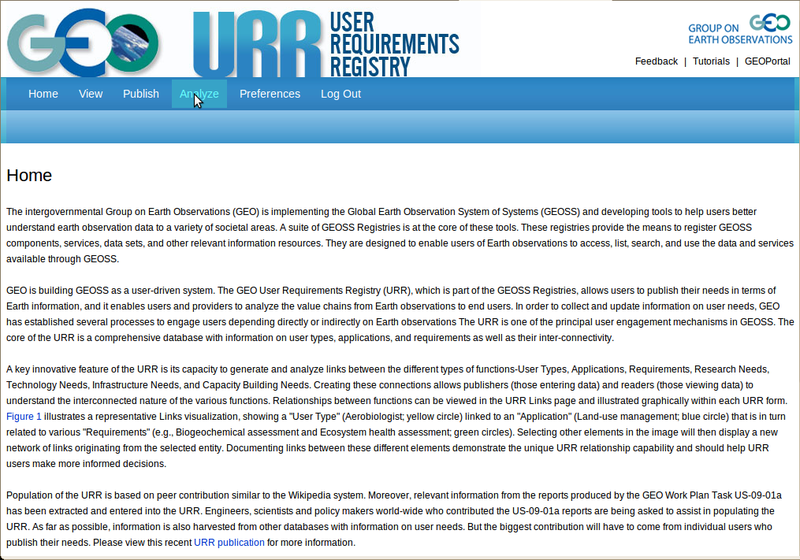
|
Introduction
The Analyze menu is expected to provide the tools to fully explore the dependency information provided by the URR 'Links' entries. These tools will allow users to explore the local environment of a given entry, to visualize the multidimensional dependency trees originating in a given entry, to analyze value chains, and to study the stability of the multidimensional networks defined by the 'Links' entries.
It is anticipated that the Analyze menu will include the capacity to analyze 'Trees,' 'Environments,' 'Networks' and 'Gaps':
- Trees: The result of this analysis is expected to be hierarchical trees or networks that show how, starting from a root entry; other entries depend on this root entry. Basic root entries are those that are not a target of any of the Links entries. This type of analysis allows answering questions about which other entries depend on a given entry (e.g., Who is using my data for what purpose? What user types and applications depend on this requirement? I am writing a proposal and need to identify the broader impact of the proposal and users of my potential results).
- Environments: For a given entry, the complete environment to which this entry is linked will be presented. The depth of the environment will be defined by a pre-selected link degree. The dimension of the environmental results will be determined by the number of active tables. This analysis will help to answer questions of how relevant a specific entry is to other entries (e.g., How does an application depend on and benefit from other applications? What data products are needed for this application?).
- Networks: In this analysis, the emerging mathematical field of network analysis is applied to characterize networks in terms of stability, critical elements and gaps. This analysis would help to answer questions concerning the criticality of an entry for the network stability, as well as other characteristics of selected networks (e.g., Which new value chains would the implementation of a specific link open up? To what extent would a loss of a data set/service impact the network geometry?).
- Gaps: The versatility of the analysis will depend on the level of integration between the URR and the other GCI Registries, as well as the level of information available in the GEOSS CSR. The analysis should answer questions related to gaps in the observing system and offered products and services as compared to the published requirements, and it should provide an evaluation of the severity of the identified gaps (e.g., Are there data products that would meet my needs? To what extent is this data set/service used? If I provide this new product, will it significantly extend the network and contribute significantly to improve the stability of the network(s)? I would like to start a new research project and would like to identify research needs that have considerable benefits).
For more details on the analyses, see the next slide.
|



